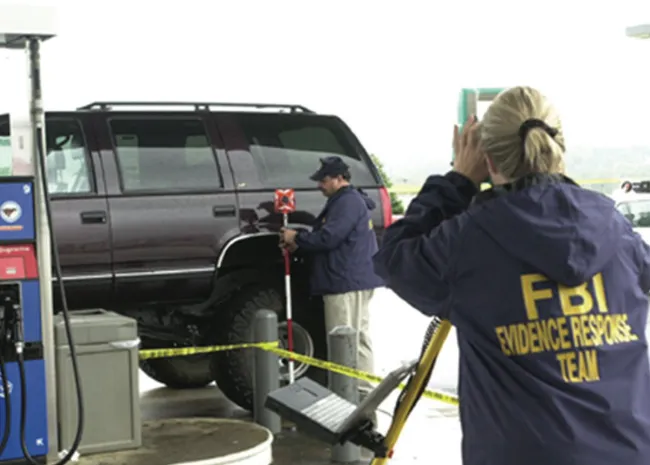The Beltway Snipers: Inside the Chilling Crime Spree That Terrorized America
In October 2002, fear gripped the Washington, D.C., area as two gunmen carried out a series of deadly sniper attacks. John Allen Muhammad and his teenage accomplice, Lee Boyd Malvo, turned everyday tasks—pumping gas, shopping, or walking to school—into life-or-death moments. Their killing spree lasted nearly three weeks, leaving residents terrified and law enforcement scrambling to stop them. This high-profile case became one of the most intense manhunts in U.S. history, forcing authorities to rethink investigative strategies and reshaping public fears about random violence.
The Shootings and Their Strategy
A Wave of Random Killings
Between October 2 and October 24, 2002, Muhammad and Malvo carried out a series of sniper attacks, killing 10 people and seriously injuring three others. As the investigation progressed, authorities linked them to earlier shootings, increasing the total number of victims to 17 dead and 10 wounded. Their ability to strike unpredictably at random locations created widespread panic, with many people afraid to step outside.
A Deadly Mobile Hideout
What made these attacks even more chilling was their method. The duo modified a 1990 Chevrolet Caprice, turning its trunk into a hidden sniper’s nest. Using a Bushmaster XM-15 rifle equipped with a scope, they fired shots through a small hole near the license plate, allowing them to kill without being seen. This setup gave them the ability to move undetected and avoid capture, frustrating investigators in the early days of the case.
The Investigation: Piecing Together the Puzzle
A Manhunt Across Multiple States
Law enforcement agencies—including local police, the FBI, and the ATF—worked tirelessly to track down the snipers. But with inconsistent witness reports and misleading tips, investigators initially struggled to make progress. Eventually, forensic analysis confirmed that the same weapon had been used in multiple shootings, linking the cases and confirming that a single killer—or team—was behind the attacks.
The Break That Led to Their Capture
A crucial breakthrough came when investigators connected a payphone tip and forensic evidence from a robbery in Montgomery, Alabama, to Malvo. His fingerprints, already on record from a previous arrest, matched those found at the crime scene. This led authorities to a dark blue Chevrolet Caprice registered in New Jersey. On October 24, 2002, police found the vehicle at a Maryland rest stop and arrested Muhammad and Malvo as they slept inside, ending their reign of terror.
The Motives Behind the Killings
A Twisted Plan
During the trial, multiple theories emerged about what drove Muhammad and Malvo to kill. Prosecutors argued that Muhammad was primarily motivated by revenge against his ex-wife, who had won custody of their children. However, Malvo later testified that their plan went far beyond personal grievances. According to him, they intended to create widespread fear, extort the government for millions of dollars, and eventually establish a training camp to recruit young followers. While some dismissed Malvo’s claims as exaggerated, they revealed a disturbing mix of personal vendetta and grandiose delusions.
Manipulation and Control
One of the most troubling aspects of the case was Malvo’s age—just 17 at the time. Under Muhammad’s influence, he became a willing participant in the killings. Years later, Malvo expressed deep remorse, acknowledging that he had been manipulated. His case has since sparked discussions about how easily young people can be groomed into committing horrific crimes and the legal implications of trying juveniles as adults.
The Aftermath and Lasting Impact
Justice and Sentencing
John Allen Muhammad was convicted of multiple murders and sentenced to death. He was executed in 2009. Malvo, as a minor, received multiple life sentences without parole. Over the years, his case has been revisited in legal debates about sentencing juveniles to life imprisonment, with some courts reconsidering his punishment in light of evolving views on juvenile justice.
Changes in Law Enforcement
The Beltway Sniper case forced police and federal agencies to rethink how they handle multi-jurisdictional crimes. It highlighted the importance of faster information sharing, improved forensic coordination, and public alert systems. Many of the investigative techniques developed during this case are now standard practice in law enforcement.
Cultural Impact
The attacks left a lasting impression on American society, inspiring books, documentaries, and dramatized portrayals in TV shows and movies. The sheer randomness of the killings continues to haunt those who lived through that terrifying period, serving as a grim reminder of how vulnerable everyday life can be.
Looking Back: Lessons from a Dark Time
Even decades later, the Beltway Sniper attacks remain one of the most unsettling crime sprees in U.S. history. The case continues to be analyzed for its legal, psychological, and law enforcement implications. It also serves as a warning about the dangers of manipulation, the unpredictability of lone-wolf violence, and the importance of vigilance in protecting communities.
Though the attacks have long since ended, their legacy lives on, shaping how we think about security, justice, and the complex nature of criminal behavior.
